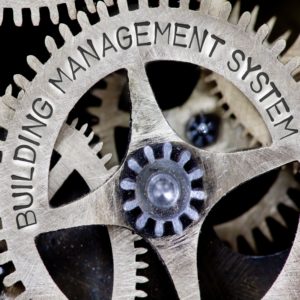 In many ways, the HVAC industry has been ahead of the curve with technology adoption. Building automation systems have been around for decades. But as more building managers want to improve indoor air quality and ventilation, there is more interplay between different systems, making management more complex.
In many ways, the HVAC industry has been ahead of the curve with technology adoption. Building automation systems have been around for decades. But as more building managers want to improve indoor air quality and ventilation, there is more interplay between different systems, making management more complex.
Even though the availability of new technology has accelerated, the industry is still at risk of falling behind. One area where this is evident is in the application of Machine Learning (ML). Machine learning has the potential to transform HVAC and building management systems (BMS).
What is machine learning?
Machine learning is a development of artificial intelligence (AI). ML refers to machines that are able to “learn” how to perform tasks by processing data. The technology has evolved because developers realized it would be more effective to teach machines how to learn rather than preprogram them for every possible action.
Why machine learning for BMS?
In the majority of BMS setups, the scheduling for services like lighting and HVAC is handled by a control engineer during installation or by a building operator throughout the life of the building. Control engineers and operators use the data available to them to set up or alter the building schedule. Some of the data used to make scheduling decisions include:
• Occupancy
• Temperature
• Precipitation
• Humidity
• Holidays/workweek schedules
An experienced professional can do a good job of setting a schedule that factors in all of these elements. But no matter how good they are, a human’s ability is limited by the amount of data he or she can process.
Machines, on the other hand, can process thousands of data points from hundreds of different sources. Machines, therefore, have the potential to make decisions based on complex data not possible for humans.
Machines can also collect the data and aggregate it in a way that allows operators to schedule equipment based on a more robust data set. This is what is known as a supervised machine learning system. The machine collects data and monitors activities, but the ultimate decision is made by a human. Another feature of supervised machine learning is that all of the data elements in the model are labelled, so the machine has instructions on how to handle the data.
In an unsupervised machine learning system, the data is unlabelled and unclassified. The machine must infer the relevance of the data. Since BMS and HVAC routinely use complex data for establishing system settings, and since a building is a closed system, the data would all be labelled and classified, so for BMS application, most ML will be supervised.
Application of machine learning
Forecasting
A good machine algorithm will factor in a building’s historical data along with weather forecasts and holiday details for a given time period. Machine learning means each forecasting instance can be improved upon, as the system will have the ability to measure the results each time it forecasts equipment demands. If this information was shared from building to building, we’d see a huge increase in energy efficiency as each BMS can “learn” from other systems and adjust equipment accordingly.
Anomaly detection
Machine learning has the potential to improve fault detection. Current fault detection and diagnostic operations track energy usage to determine if there are issues with the equipment. The big advantage of machine learning is that it is not limited to the detection of specific, predetermined markers. Instead, it can scan all building operation and metrics, and report any anomaly it encounters. This has benefits for building managers and manufacturers as system issues can be detected and tracked in a way never possible.
Dealing with system complexity
Building controls are becoming increasingly complex. Any given building can have multiple operations, withed zoned HVAC and lighting. Machine learning can be useful in establishing better coordination of building systems. It can monitor and track how different systems interact.
For example, machine learning can monitor a building with separate heating/cooling and ventilation systems, providing the building operator with insights into how the various systems interact. This will become increasingly important in buildings that retrofit indoor air quality solutions.
As machine learning technology improves, you can expect to see more of it in BMS and HVAC.


